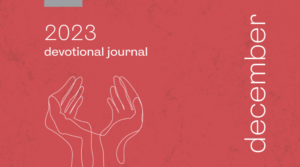The account of Jesus’ transfiguration in Mark 9:2-13 makes a good script for the movies: dazzling lights, well-known personalities suddenly appearing out of nowhere, a mysterious cloud descending and a booming voice declaring Jesus as the “beloved” of God. Any observer would have been awed, frightened by the numinous scene unfolding before one’s very eyes. The three disciples of Jesus certainly experienced these emotions, and more besides. For those of us reading this episode in Mark’s Gospel, the question that invariably cross our minds is this: did this event happen the way Mark and the other two Gospel writers (Matthew and Luke) depicted it?
GRASPING BOTH THE HISTORY AND THEOLOGY IS IMPERATIVE IN READING THE GOSPELS
For us to read the Gospels correctly, we need to put on bifocal lenses. On the one side, these writings dubbed “good news” are to be read as reliable HISTORY. On the other, they are to be read as purposeful THEOLOGY on the part of the Gospel writers. We need to keep both history and theology in mind as we read the Gospels.
Is the account in Mark 9:2-29 reliable history?
Did Jesus’ transfiguration and the healing of the boy plagued by an unclean spirit happen as historical events? We can plausibly conclude that the account of Jesus’ transfiguration is as historical as it is dramatic. Afterall, the events in the Gospels are all eye-witness accounts (cf. Luke 1:1-4; John 21:24-25). In the transfiguration, one of the three disciples who accompanied Jesus up the mountain was Peter. In a letter he later wrote, Peter remarked: “We were eyewitnesses of his majesty. For when he received honor and glory from God the Father, and the voice was borne to him by the Majestic Glory, “This is my beloved Son, with whom I am well pleased,” we ourselves heard this very voice borne from heaven, for we were with him on the holy mountain” (2 Peter 1:16-18). This event was recalled with all the details expected of an eye-witness; moreover, the disclosure by Peter that his proposal – to build tents for Jesus, Elijah and Moses – had arisen because “he did not know what to say, for they were terrified” (v.6) drips with intimate personal knowledge. The historical veracity of the transfiguration seems sufficiently demonstrated.
What is the theological significance of these episodes?
For the first recipients of Mark’s Gospel, this account of Jesus’ transfiguration would be reminiscent of the familiar Old Testament account of Moses ascending Mount Sinai to receive the Decalogue (Exodus 24:15-18). The dazzling radiance of Jesus would allude to the revelation of God’s glory, and the overshadowing cloud would echo the divine presence and the place from which God speaks. The IDENTITY of Jesus as God’s Messianic Son is patently affirmed by the words, “This is my beloved Son”. The directive to the disciples to “listen to him” speaks of Jesus’ authority as the revealed Word of the triune God. Mark’s Gospel significantly frames Jesus’ transfiguration between Jesus’ prediction of his suffering, death and resurrection (Mark 8:31-9:1) and his discussion concerning the role of Elijah as precursor to his own passion and resurrection (Mark 9:9-13). This points to the other purpose of the transfiguration – to foreshadow the coming GLORY of Jesus’ death and resurrection. The coming together of Jesus’ DIVINE IDENTITY and his GLORIOUS DESTINY is a recurring theological theme in the New Testament (e.g., Philippians 2:5-11).
APPLICATION OF MARK 9:2-29 TO OUR LIVES
Who is Jesus to us?
Jesus is the divine Son who walked the streets of ancient Palestine teaching about the Kingdom of God and performing all kinds of miracles. On our behalf, Jesus was crucified and died on a cross, but rose again and is now seated at the right hand of God. Like the disciples, we may be unsettled and frightened because we do not fully understand all that is happening around us. But when we give our lives to him, Jesus delivers us from sin and death and gives us eternal life instead. This takes a deliberate choice on our part, desiring to move from living in a FEAR-ZONE to living in a FAITH-ZONE instead. In so doing, we embrace both the HISTORY and THEOLOGY of the transfiguration and the cross to become true disciples of Jesus Christ.
Written by Dr Ho Chiao Ek
We have recommended a few resources below to help you learn more about Jesus’ transfiguration, the Gospel according to Mark, as well as the reliability of the Gospel accounts in the New Testament. Do check them out. May you be richly blessed!
SERMON
“From Fear-zone to Faith-zone”, by Rev Edmund Chan: https://sermonresources.cefc.org.sg/file/1563
ARTICLES, BOOKS & VIDEOS
J.B. Green, “Transfiguration” in J.B. Green, J.K. Brown and N. Perrin (eds.), Dictionary of Jesus and the Gospels, 2nd ed. (Downers Grove, Illinois: IVP Academic, 2013), pp. 966-72.
Craig L. Blomberg, The Historical Reliability of the Gospel, 2nd ed. (Downers Grove, Illinois: IVP Academic, 2007).
Craig L. Blomberg, Making Sense of the New Testament(Downers Grove, Illinois: IVP, 2003), pp. 17-70.
David Garland, A Theology of Mark’s Gospel(Grand Rapids, MI: Zondervan, 2015), pp. 138-40; 299-305.
Clinton E. Arnold (ed.), “Mark” in Zondervan Illustrated Bible Backgrounds Commentary, Vol. 1 (Grand Rapids, MI: Zondervan, 2002), pp. 257-60.
“Are the New Testament Manuscripts Reliable?”, by Bill Mounce: https://www.youtube.com/watch?v=zLRyuoxPdYw&feature=youtu.be
(In this 7-minute video, renown Greek scholar, Dr Bill Mounce, gives a clear and concise refutation of the commonly made charge that the New Testament documents are unreliable as they contain many errors.)
“Miracles(Part 1)”, by Craig Keener @ Talbot School of Theology, Biola University: https://www.youtube.com/watch?v=q9ksgLrPCkg&feature=youtu.be
“Miracles (Part 2)”, by Craig Keener @ Talbot School of Theology, Biola University: https://www.youtube.com/watch?v=YUGKJz8Iuw0&feature=youtu.be

